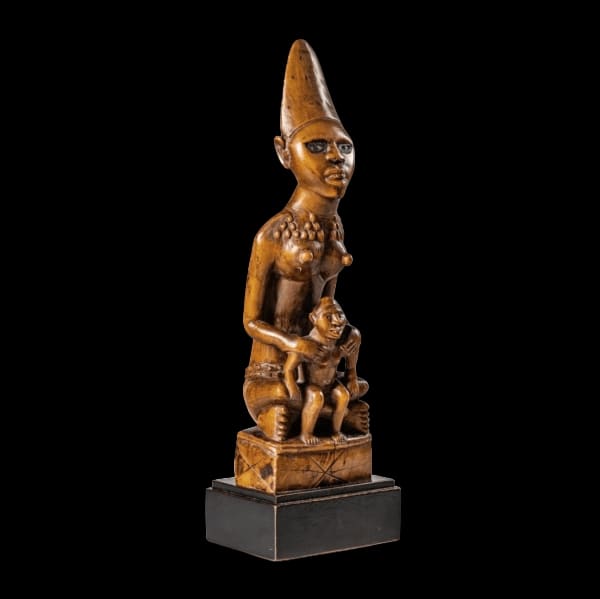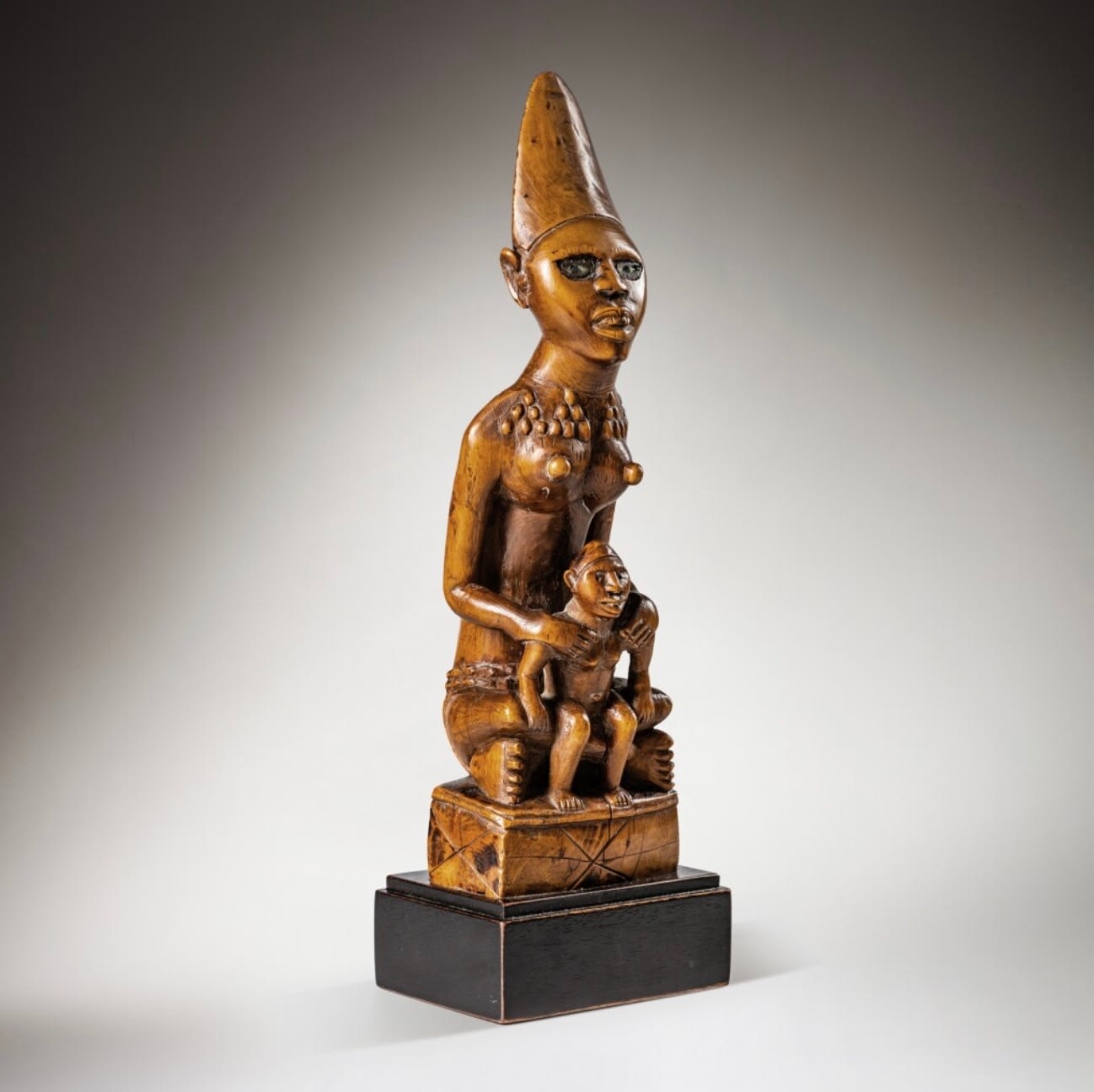Yombe phemba Maternity Figure, Republic Democratic of the Congo
Wood
31 x 20 cm
12 1/4 x 7 7/8 in
12 1/4 x 7 7/8 in
10001
Sold
The hieratic nature of the Phemba Maternities has brought this corpus into the general history of art as a symbol of fertility (MacGaffey in Tervuren, 1995: 290) and maternal protection. Better known with the reclining child (Lehuard, R., Art Bakongo, les centres des styles, p571-581), this Phemba offers a rarer type of the child in a sitting position. Usually most children are presented in the classical breastfeeding position. The sculptor of our maternity hospital has nevertheless chosen to position the child sitting frontally in the middle of his mother's lap, thus assigning him an active role in the communication with the spectator. This original choice and the resulting difficulty also demonstrate the skill of the sculptor, who is thus forced to hollow out the space behind the child's legs. With this "piece of bravery" he breaks away from the traditional representation of maternity, which is technically easier to achieve, with the child's body sculpted as an extension of the mother's legs or knee.
This maternity is also distinguished by its fine network of coffee bean-shaped scarifications that extend along the entire length of the back, comparable to the Phemba maternity in the Arman collection (Musée de Marseille, 1996, no. 108), and by its realistically modelled face obtained by a salient sculpture combined with a careful polish. Finally, her slightly bent back and her haughty posture contribute to the impression of majesty that emanates from the sculpture, making the Kongo / Yombe maternities a universal symbol of the art of the Congo.
On the back of the chest the inventory number G.F.K 357 refers to the Georges Frederik Keller Collection (1899-1981), a modern art dealer of the first half of the 20th century well known for his taste and knowledge of African art. It later passed into the hands of Paolo Morigi and appeared in the sale of his collection at Sotheby's in 2005.
This maternity is also distinguished by its fine network of coffee bean-shaped scarifications that extend along the entire length of the back, comparable to the Phemba maternity in the Arman collection (Musée de Marseille, 1996, no. 108), and by its realistically modelled face obtained by a salient sculpture combined with a careful polish. Finally, her slightly bent back and her haughty posture contribute to the impression of majesty that emanates from the sculpture, making the Kongo / Yombe maternities a universal symbol of the art of the Congo.
On the back of the chest the inventory number G.F.K 357 refers to the Georges Frederik Keller Collection (1899-1981), a modern art dealer of the first half of the 20th century well known for his taste and knowledge of African art. It later passed into the hands of Paolo Morigi and appeared in the sale of his collection at Sotheby's in 2005.
Provenance
Georges Frederik Keller Collection (1899-1981), ParisFrench private collection
Loudmer-Poulain, Paris, Arts Primitifs, 8 June 1978, no. 294
Paolo Morigi Collection (1939-2017), Magliaso-Lugano
Sotheby's, Paris, Collection Paolo Morigi. Important African Art, 6 June 2005, No. 168
Belgian private collection, acquired at this sale
Exhibitions
Maastricht, TEFAF - Bernard de Grunne, Kongo Phemba, 24-30 juin 2022
Literature
Jacob A., Statuaire de l'Afrique Noire, ABC, 1976: no. 42.Grunne (de) B., Kongo Phemba, TEFAF Maastricht, 2022: p. 88, no. 36.
Join our mailing list
* denotes required fields
We will process the personal data you have supplied in accordance with our privacy policy (available on request). You can unsubscribe or change your preferences at any time by clicking the link in our emails.



